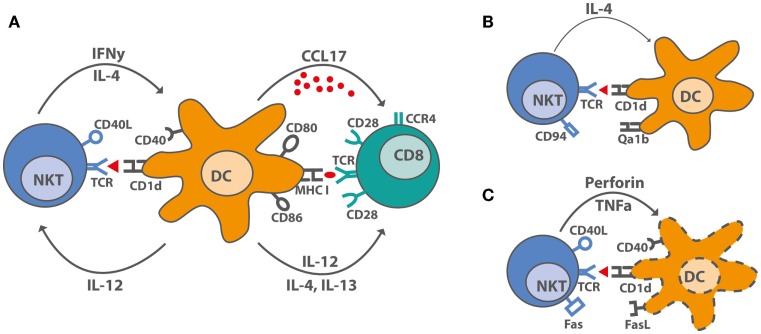Figure 1.
iNKT cell–DC interactions after stimulation with αGalCer. (A) Under optimal stimulatory conditions, iNKT cells produce IL-4, large amounts of IFNγ and upregulate CD40L, thereby inducing maturation in DC. DC maturation leads to increased costimulatory capacity through upregulation of CD80 and CD86, of MHC molecules, and by producing the pro-inflammatory cytokine, IL-12, and the chemokine, CCL17. CCL17 attracts CCR4+ cells, including CD8+ T cells, which can be activated by the licensed DC. (B) Overstimulated iNKT cells upregulate inhibitory receptors like CD94 and are incapable of producing IFNγ. DC interacing with hyporesponsive iNKT cells cannot be activated and do not induce CD8+ T cell activation. (C) Some activated iNKT cells induce DC lysis rather than maturation by yet unknown mechanisms. Proposed mechanisms suggest a role for TNFα, perforin, Fas–FasL interactions, and even CD40–CD40L.

